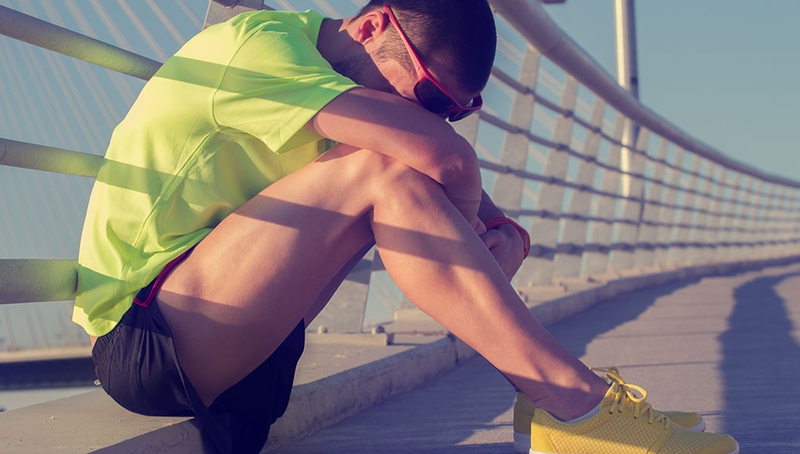Those who play football, soccer, hockey or run track often suffer from sports hernia. Typically, this condition affects more males than females. Almost all reports of sports hernia are from unknown causes and take place gradually over time. It is believed that traumatic incidents like being checked from behind or tackled can affect it. The injury can be sped up from constant kicking, twisting and turning, but what is a sports hernia on earth? Only athletes suffer from it? No, those who are not professional athletes can also get a sports hernia. Continue reading to learn more about this injury.

What Are the Symptoms of Sports Hernia?
To speak directly, a sports hernia refers to a painful, soft tissue injury that occurs in the groin area. So pain in the groin area is the most common symptom. The pain will vary in intensity from person to person, but is often only present during physical activity like sprinting, twisting, or kicking. Pain from a sports hernia tends to subside while resting or sitting. Pain can also be felt in other areas or of the body.
There are also other common sports hernia symptoms, including:
Pain while doing sit ups
Pain that spreads to the inner thigh area
Pain that occurs in the groin area when sneezing or coughing
Pain subside when resting, sleeping or sitting
Sensitivity to touch in the lower abdominal area
How to Diagnose Sports Hernia
History
Doctors will often look at patient history first to determine whether the injury has occurred suddenly or is due to an event that occurs weeks or even years previously. What is a sports hernia diagnosis process? The doctor will interview the patient in regards to their athletic performance and will ask when the pain or tenderness first began, if the pain intensifies suddenly or gradually and additional questions that can help determine what may be the cause for the injury.
Examination
A physical exam will also be performed during the first visit usually. This exam tends to focus on the lower abdomen area as well as the legs and pubic area. The doctor will begin by touching or palpating the areas while the patient is sitting or lying down. This is to give them a better visual of the area. They will also
The doctor will also ask the patient to do some standard exercises. Sit-ups and thigh contraction exercises are the most common exercises. Doing this simple exercise will allow the doctor to see the patient's range of motions and determine more specifically where the source of pain is originating from during physical activity. This will also help the doctor determine which tissues are injured.
Imaging
Diagnostic imaging scans will also be ordered. These scans are done in order to help the doctor pinpoint exactly where the injured tissues are located. The most common diagnostic imaging scan performed is the magnetic resonance imaging or MRI. These scans should only be ordered by a doctor who specializes in groin injuries and additionally should only be reviewed by a radiologist who regularly sees images of those suffering from groin injuries.
Once there has
How to Treat Sports Hernia
Nonsurgical treatment options
Rest. Rest is necessary for the first ten days after the injury has occurred. Ice and compressions wraps can also be helpful to reduce pain.
Therapy. Physical therapy is often part of non-surgical sports hernia treatment, starting two weeks after injury has occurred. Physical therapy helps improve mobility, flexibility and improve strength to the injured area. Physical therapy may last for up to six weeks after injury and is typical one of the most successful non-surgical treatment for sports hernia.
Medications. Non-steroidal anti-inflammatory medicines are often recommended by doctors to help relieve pain and reduce swelling. If the pain persists over a long period of time, cortisone injection may also be recommended.
Surgery treatment options
If the pain returns after starting sports activity again once completing non-surgical treatments for sports hernia, surgery might be necessary.
Procedures. A few procedures can be performed to repair the torn tissues either through an open procedure where one long incision is made or through an endoscopic procedure. A small cut may also need to be made to one of the nerves in the groin for relieving pain during the procedure.
Rehabilitation. What is a sports hernia surgical rehabilitation plan? This is a plan that you and your doctor will discuss for after your surgery. Most individuals are able to return to physical activity after about 12 weeks.
Other surgeries. Often the tissues will tear again and surgery will be need to be repeated. Aside from repeat surgeries, sports hernias can cause pain to the inner thigh which persists even after surgery. An abductor tenotomy may be necessary to reduce the thigh pain then.
Can This Problem Be Prevented?
It can be difficult to prevent a sports hernia injury because of the strain and stress that is placed on the pelvic area and hips during certain physical activity. However, those who are at high risk of sports hernia, like athletes who play soccer, football or hockey, should consider some sort of prevention program. This can include:
Stabilizing exercise for the core and abdomen
Hip abductor muscle strengthening exercises
Exercises that focus on decreasing the stress placed on the pelvic area and lower abdominal region
View All Comments /Add Comment